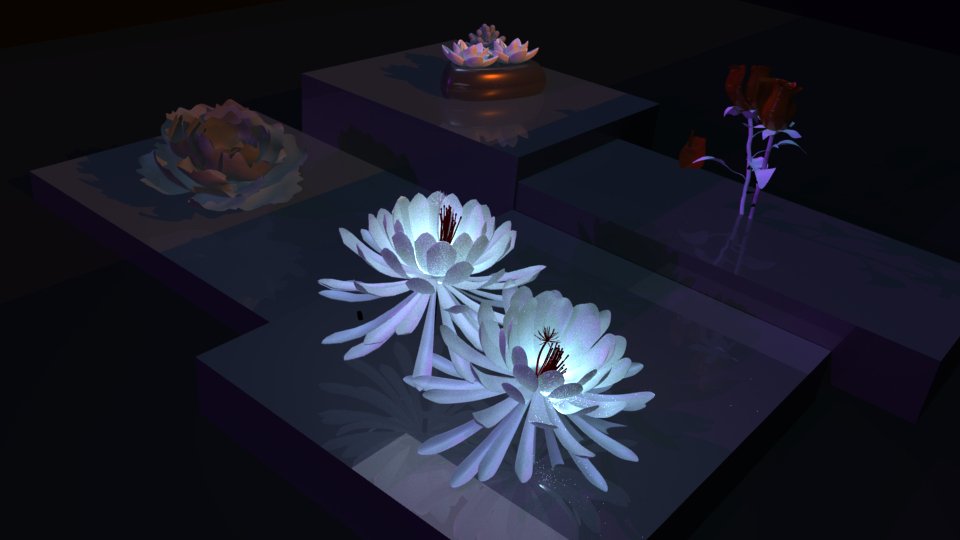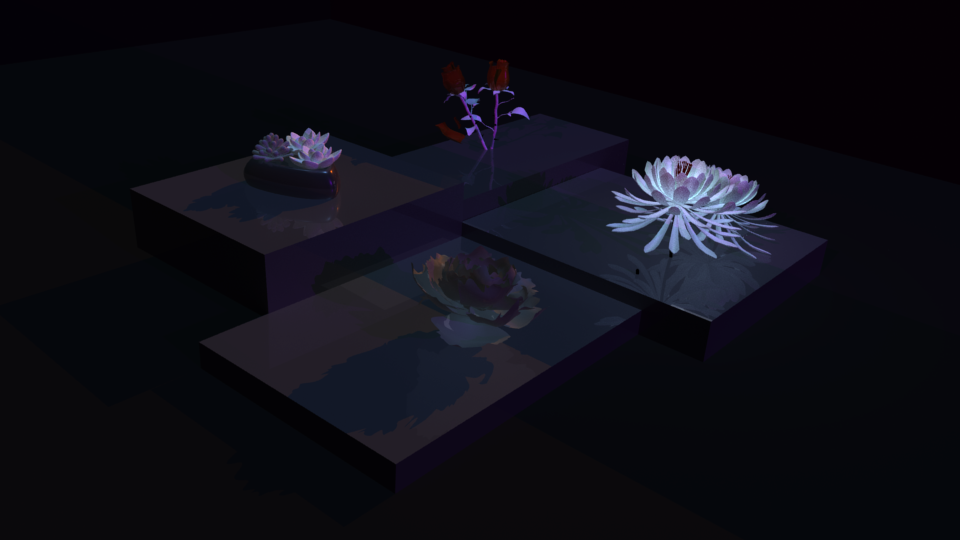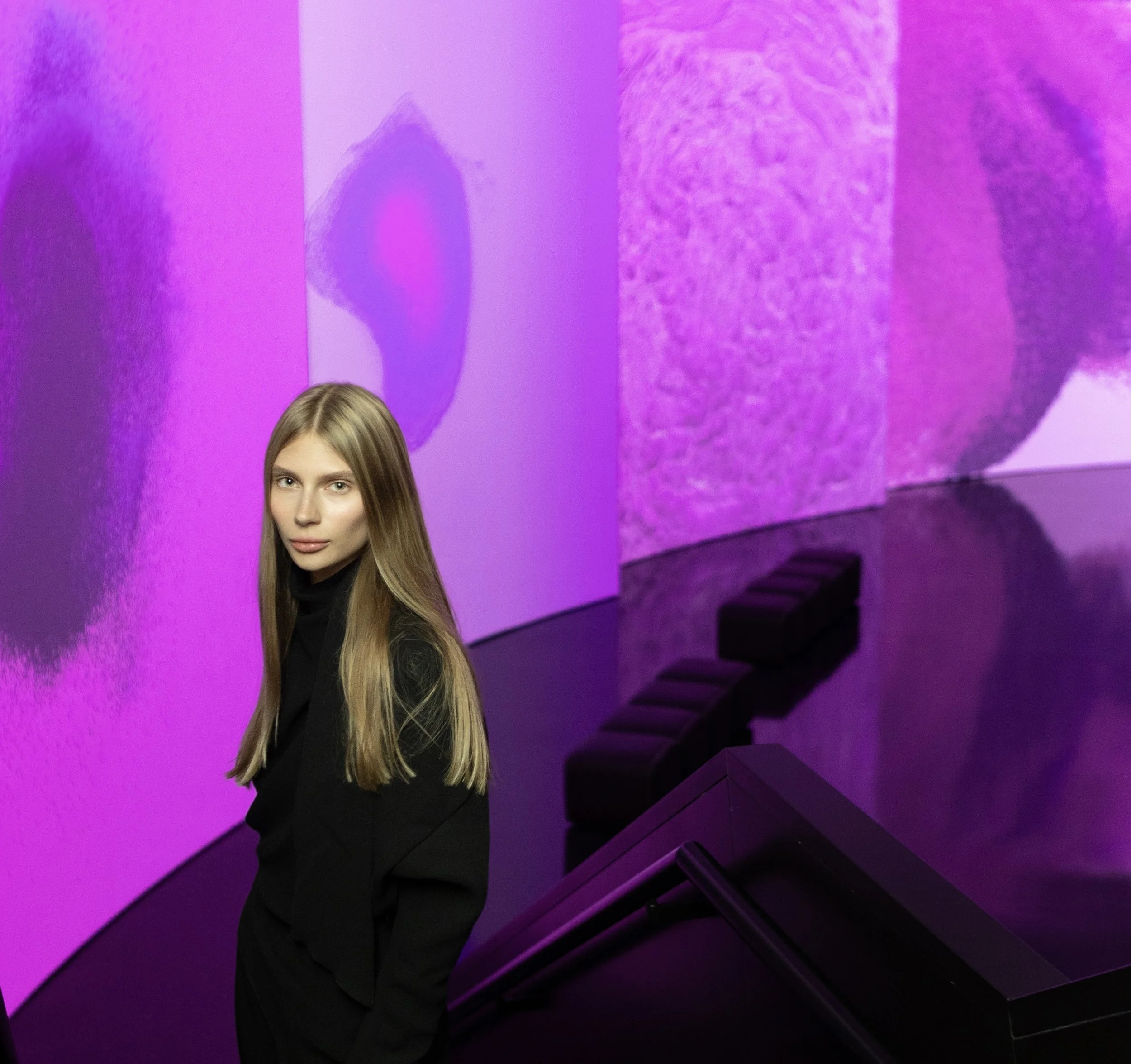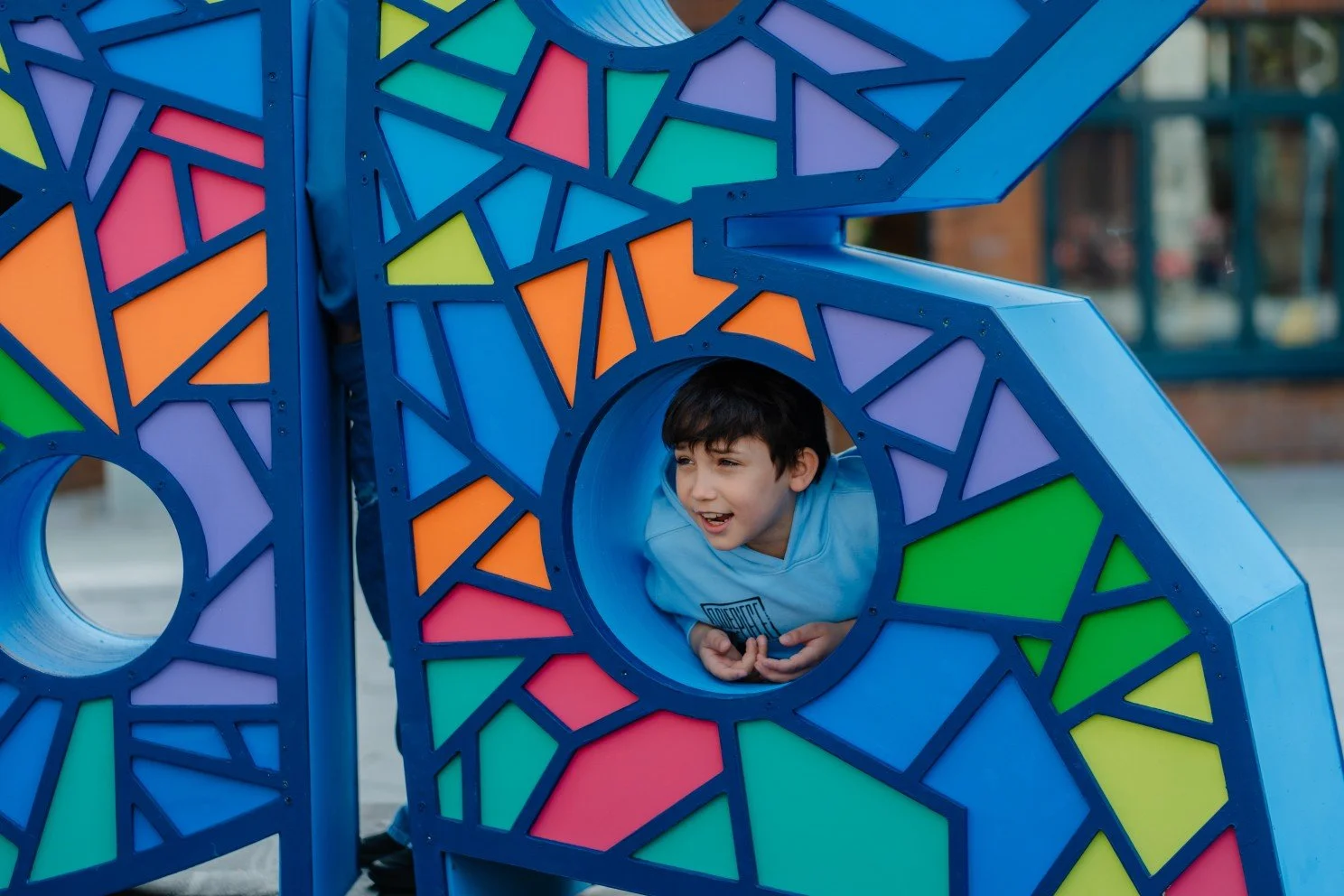10 Questions with Meiqi Zhang
Meiqi Zhang is an interdisciplinary artist, and her journey into this unique field has been a thrilling exploration of the intersection of science and art. Her passion for technology and creativity led her to this path. As an artist, she creates a wide range of artistic works that often revolve around living organisms and post-nature concepts. Her studio serves as the epicenter of her creative endeavors, where she brings her imaginative visions to life.
Meiqi Zhang - Portrait
ARTIST STATEMENT
In her artistic practice, she uses living organisms, biotechnology, and various media to craft thought-provoking pieces that challenge our perceptions of life, nature, and the relationship between human beings and non-human beings. These works can be featured in exhibitions, competitions, and other art events, allowing her to share her perspective with a broader audience. She takes great pride in the innovative and thought-provoking nature of her art. She believes that art has the power to spark conversations, provoke emotions, and challenge established norms. It's her hope that through her work, she can inspire people to think differently about the world around them.
Before It All, Installation and performing art video, 2023 © Meiqi Zhang
INTERVIEW
First of all, introduce yourself to our readers. Please tell us more about your background and how you began making art.
I'm an interdisciplinary artist, and my artistic journey has been an exciting adventure where I explore the captivating intersection of science and art. My fascination with technology and my deep-rooted passion for creativity have naturally guided me on this unique path. Within the realm of art, I craft a diverse array of works that often revolve around living organisms and post-nature concepts. My studio is like the beating heart of my creative endeavors, providing the space where my imaginative visions come to life.
In my artistic practice, I dive into the captivating world where living organisms, biotechnology, and various forms of media intersect. The outcome is a collection of thought-provoking pieces that invite us to question our assumptions about life, nature, and the intricate relationships between humans and the non-human entities that share our world. These creations find their home in exhibitions, competitions, and various art events, enabling me to share my unique perspective with a broader and more diverse audience.
How would you define yourself as an artist today? And what makes you unique?
As an artist, my work has evolved into a deep exploration of the dynamic relationship between humanity and the natural world.
What sets my approach apart, I believe, is the deliberate effort to embrace diverse perspectives regarding our connection with nature. Beyond the environmental considerations, my work extends into areas such as the creation of physical spaces and the preservation of local cultures. I aspire to challenge conventional narratives by delving into how our interactions with the environment not only shape the physical environments we occupy but also influence the cultural and spiritual landscapes.
In essence, my aim is to broaden the dialogue surrounding our interconnectedness with the natural world, encouraging viewers to reexamine their viewpoints. By incorporating elements from indigenous cultures and delving into the creation of spaces, my art seeks to transcend the dichotomy between human and non-human interests, inspiring contemplation about the intricacies of our relationship with the environment and with each other.
Before It All, Installation and performing art video, 2023 © Meiqi Zhang
Before It All, Installation and performing art video, 2023 © Meiqi Zhang
As an interdisciplinary artist, you work with different mediums and techniques, from installations to video and performance. Can you guide us through your creative process?
Certainly. My creative process is a fluid exploration that typically commences with a profound curiosity about a concept or question that sparks my imagination. Whether it's pondering the genuine needs of plants in our environmental efforts or delving into the realms of space production, local culture, and philosophy, these concepts serve as the origin of my artistic endeavors.
The journey typically begins with in-depth research and immersion in the subject matter. This phase entails diving into scientific literature, engaging with cultural narratives, and often collaborating with experts in relevant fields. This deep dive not only shapes the conceptual foundation of the work but also inspires ideas about the most effective medium to convey the intended message.
Once the conceptual groundwork is laid, the choice of the medium becomes a deliberate decision. I approach each project with the belief that the medium should not only complement but also enhance the narrative. For instance, installations might be selected to immerse the audience physically in the environment I seek to evoke, while video and performance can infuse dynamic storytelling elements.
Experimentation holds a vital place in my creative process. It involves the exploration and refinement of ideas, the manipulation of materials, and an embrace of the unexpected. This phase frequently leads to the discovery of new possibilities and shapes the final form of the artwork.
Collaboration stands as another fundamental aspect of my process. Engaging with experts, whether in the sciences, technology, or local cultures, adds depth and authenticity to my work. It ensures that the final piece is not only visually captivating but also firmly rooted in a rich tapestry of knowledge and perspectives.
How much planning goes into each work, and where do you find inspiration?
The creative journey begins with a deep dive into the conceptual realm, immersing myself in extensive research and contemplation. This initial phase is pivotal in defining the overarching narrative and establishing the conceptual boundaries that will guide the creation process.
As I transition from concept to execution, the planning becomes increasingly intricate. For installations, meticulous considerations of space, materials, and audience engagement take center stage. Detailed sketches, models, and prototypes play a crucial role in refining the envisioned outcome. Similarly, when exploring video or performance art, scripting and storyboarding become essential tools to shape the narrative and visualize the artistic elements.
While planning is a significant aspect, I also cherish the spontaneity inherent in the creative process. Striking a delicate balance between structure and flexibility allows for unexpected discoveries and innovations during the actual creation phase. This fluidity ensures that the final piece retains a sense of freshness and authenticity.
Inspiration is drawn from a diverse array of sources. Nature, with its intricate patterns and processes, consistently serves as a wellspring of ideas. Delving into scientific literature and engaging in dialogues with experts in fields like biology or anthropology provides intellectual nourishment, offering a deeper understanding of the subjects I explore. Moreover, inspiration often arises from everyday experiences, conversations, and observations of culture. The complex tapestry of current social and environmental affairs serves as a profound source of inspiration, influencing both the thematic content and aesthetic choices in my work.
WholeFood, Mixed art, 2023 © Meiqi Zhang
How do you choose which medium or technique suits a certain project?
Selecting the appropriate medium or technique for a project is a nuanced decision that emerges from a blend of conceptual considerations and a desire to convey a specific emotional or intellectual impact. The initial conceptual phase, where I immerse myself in research and contemplation, plays a pivotal role in shaping this decision-making process.
The nature of the concept often acts as a guiding force in determining the most suitable medium. For instance, when a project centers around the immersive exploration of an environmental concept, installations may emerge as the ideal medium. This choice allows for the creation of a physical environment that envelops the audience and heightens their sensory experience. Conversely, when the narrative demands dynamic exploration of a theme, video or performance may take precedence. These mediums provide a temporal dimension, enabling the unfolding of a story or the manifestation of a concept over time.
The selection of materials also holds substantial significance. Whether it involves experimenting with living organisms, integrating cutting-edge technology, or employing traditional artistic materials, the materiality of the project is given careful consideration. This consideration extends beyond mere aesthetic choices; it contributes to the conceptual depth and thematic resonance of the work.
Furthermore, the intended audience experience remains a pivotal factor in the decision-making process. If the goal is to engage the audience physically and spatially, installations emerge as a compelling choice. On the contrary, if the aim is to provoke contemplation or elicit emotional responses, the narrative potential of video or the immediacy of performance might be the more effective avenue to pursue.
Let's talk about the main themes behind your art. What messages are you trying to convey?
At the heart of my artistic exploration lies a deep engagement with the intricate relationship between humanity and the natural world. One recurring theme revolves around the fundamental question of whether our efforts to protect the environment and foster plant growth genuinely align with the authentic needs of plants themselves. Through my work, I aim to provoke reflection on whether our actions inadvertently prioritize profit or other motives over the true interests of the non-human entities that coexist in our world.
Beyond this critical inquiry, my art delves into diverse perspectives concerning our relationship with nature. I delve into the production of space and how our interactions shape physical landscapes, challenging conventional notions of the environments we inhabit. Additionally, I draw inspiration from local cultures, seeking to preserve and celebrate their wisdom, often marginalized in mainstream narratives.
Furthermore, mindfulness is interwoven into the fabric of my art. Whether I am exploring bio-design, electronic design, or the production of space, my aim is to inspire a conscious awareness of our impact on the world. Each piece serves as an opportunity for viewers to contemplate the intricacies of their own relationship with nature and consider the broader implications of their choices. Ultimately, my art serves as a catalyst for deeper reflection on the multifaceted connections between humanity and the natural world.
FOUR HORSE OF THE APOCALYPSE, 3D art, 2020 © Meiqi Zhang
FOUR HORSE OF THE APOCALYPSE, 3D art, 2020 © Meiqi Zhang
Your statement mentions how your work aims to "challenge our perceptions of life, nature, and the relationship between human beings and non-human beings." Can you tell us more about this concept? How do you incorporate it into your work?
Challenging perceptions lies at the core of my artistic practice, driven by the belief that art possesses the unique ability to ignite contemplation, evoke emotions, and ultimately reshape our perspectives of the world that surrounds us.
In my exploration of the intricate relationship between humans and non-human entities, I delve into the often overlooked yet deeply intrinsic connections that bind us together. Take, for instance, the question of whether our environmental endeavors genuinely align with the authentic needs of plants. Through my art, I act as a catalyst to question the assumptions and priorities that underlie our interactions with the natural world. My aim is to initiate a transformative shift in perspective, urging viewers to reconsider their roles within the broader ecological narrative. This concept extends to the production of space, as well as the infusion of philosophy and local culture into my artistic narratives. I seek to disrupt established notions about our physical surroundings, encouraging viewers to peer beyond the familiar and interrogate the artificial boundaries that delineate nature from the human-made environment.
The manifestation of these thought-provoking themes within my work is carefully orchestrated through the selection of mediums and techniques. Installations offer a tactile and immersive experience, beckoning viewers to step into environments that challenge their conventional understanding of space and the natural world. Video and performance serve as dynamic vehicles for storytelling, enabling a temporal exploration of concepts that push against established norms and invite fresh perspectives. Ultimately, my art serves as a catalyst for profound reflection, inviting viewers to embark on a journey of rediscovery and reinterpretation of the world in which we live.
FOUR HORSE OF THE APOCALYPSE, 3D art, 2020 © Meiqi Zhang
You also work with living organisms that you incorporate into your installations. How did you come up with this idea? And what does it help you communicate?
The concept of incorporating living organisms into my installations stems from a rich tapestry of inspiration and influence, with a significant acknowledgment of the profound impact that my experiences under the guidance of Eduardo Kac have had on my artistic journey. Eduardo Kac, who served as my adviser and professor during my graduate studies, is a pioneering figure in the realm of bio art. His groundbreaking work fundamentally reshaped my perspective on the intricate intersection of science and art.
Having witnessed the transformative potential of living organisms as a medium in Eduardo's work, I was deeply inspired to embark on my own exploration of this dynamic realm within my artistic practice. This concept germinated from a yearning to infuse my installations with a heightened sense of interactivity and organic complexity. The inclusion of living organisms, whether they are microorganisms or plant life, breathed life into the artistic narrative, inviting viewers to engage with the artwork on a profoundly visceral level.
Furthermore, the integration of living organisms amplifies the temporal dimension of my work. The ever-evolving nature of life introduces an element of unpredictability and perpetual change, mirroring the fluid and evolving relationship between humanity and the environment. It serves as a potent tool for cultivating a profound sense of responsibility and mindfulness, compelling viewers to acknowledge the far-reaching consequences of their actions on the living world that surrounds them. Through this incorporation, I endeavor to create a dynamic dialogue that challenges conventional boundaries and sparks a deeper connection between viewers and the living entities that inhabit our shared planet.
As we are almost at the end of the year, what else do you wish to accomplish this year, both in terms of career goals and personal life?
As I reflect on the remainder of this year, my overarching goal is to delve deeper into the intricate relationships that different cultures have with their environments. I aim to unravel the nuanced factors that contribute to their respective ecological footprints. This research not only serves as a wellspring of inspiration for my artistic practice but also lays the foundation for fostering cross-cultural dialogues on sustainable practices and environmental consciousness.
In terms of my career aspirations, I aspire to translate these newfound insights into innovative artistic endeavors that challenge preconceptions and stimulate contemplation about our collective impact on the natural world. Whether it be through immersive installations, thought-provoking video works, or other artistic mediums, my objective is to contribute to a broader discourse on the influences of culture and their implications for our shared environment. Collaborations with like-minded individuals and organizations that are passionate about sustainability also feature prominently in my plans, as I firmly believe in the transformative power of art to inspire positive change.
On a personal note, I am committed to maintaining a sense of balance and well-being. My connection with nature, whether through artistic exploration or personal experiences in the great outdoors, remains a constant source of inspiration and rejuvenation. As the year draws to a close, I intend to carve out moments for personal reflection and self-care, ensuring that I enter the upcoming year with a renewed sense of creativity and vitality.
© Meiqi Zhang
Finally, what are you working on right now? Is there anything exciting you would like to tell our readers?
As previously mentioned, I'm deeply immersed in a project that builds upon my exploration of the contrasting effects of American and Chinese cultures on nature. This endeavor involves a thorough exploration of both cultural landscapes, with a focus on unearthing the subtle nuances that shape each society's relationship with the environment.
While I don't want to reveal too much at this stage, I'm particularly excited about the integration of innovative technologies and the potential for creating immersive audience engagement. The ultimate goal is to craft an experience that not only informs but also actively involves viewers in the exploration of these cultural dynamics and their impact on nature.
As this project continues to unfold, I eagerly anticipate sharing the journey with our audience and readers. It's a thrilling endeavor that pushes the boundaries of my artistic practice and, I hope, sparks meaningful conversations about the intricate interplay between culture, nature, and the potential for positive change.
Artist’s Talk
Al-Tiba9 Interviews is a promotional platform for artists to articulate their vision and engage them with our diverse readership through a published art dialogue. The artists are interviewed by Mohamed Benhadj, the founder & curator of Al-Tiba9, to highlight their artistic careers and introduce them to the international contemporary art scene across our vast network of museums, galleries, art professionals, art dealers, collectors, and art lovers across the globe.























